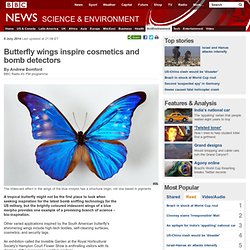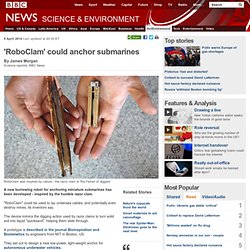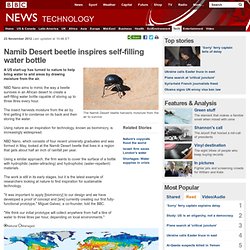

The car designer who turned a sailfish into a supercar. The sailfish can swim faster than a cheetah can run – and the secrets behind its speed inspired Frank Stephenson to bring natural magic into the world of car design.

How would your boss react if he had to sign off for an expensive stuffed fish you’d bought on a whim on your holiday? Most of us would probably answer “not very thrilled”. But Frank Stephenson’s boss is not your average boss; his workplace is not your average workplace; and the fish? Well, that’s not your normal fish either. Stephenson is design director of McLaren Automotive, the carmakers behind a range of highly prized, high-priced cars. On the way back to London, Stephenson stopped off in Miami and went down to a local fishing village, where, in a stroke of luck, a local fisherman had just caught a sailfish. The sailfish is a kind of turbo swordfish; one that has been clocked swimming 100m in around half the time it takes Usain Bolt to run it. Butterfly wings inspire cosmetics and bomb detectors. 8 July 2014Last updated at 21:09 ET By Andrew Bomford BBC Radio 4's PM programme The iridescent effect in the wings of the blue morpho has a structural origin, not one based in pigments A tropical butterfly might not be the first place to look when seeking inspiration for the latest bomb sniffing technology for the US military, but the brightly coloured iridescent wings of a blue morpho provides one example of a promising branch of science - bio-inspiration.

Other varied applications inspired by the South American butterfly's shimmering wings include high-tech textiles, self-cleaning surfaces, cosmetics, and security tags. An exhibition called the Invisible Garden at the Royal Horticultural Society's Hampton Court Flower Show is enthralling visitors with its displays of the microscopic world in gardens. "Oh wow! " "They're just like scales, like fishes have," said her class-mate, "They're really nice. " 'RoboClam' could anchor submarines.
9 April 2014Last updated at 20:33 ET By James Morgan Science reporter, BBC News RoboClam was inspired by nature - the razor clam is 'the Ferrari of diggers' A new burrowing robot for anchoring miniature submarines has been developed - inspired by the humble razor clam.

"RoboClam" could be used to lay undersea cables, and potentially even destroy mines, its inventors say. The device mimics the digging action used by razor clams to turn solid soil into liquid "quicksand", helping them slide through. A prototype is described in the journal Bioinspiration and Biomimetics by engineers from MIT in Boston, US.
Continue reading the main story. Biomimicry 3.8. 3.8 Institute. The Biomimicry 3.8 Institute is a not-for-profit organization that promotes the study and imitation of nature’s remarkably efficient designs, bringing together scientists, engineers, architects and innovators of all ages who can use those models to create sustainable technologies. The Institute was founded in 2006 by science writer and consultant Janine Benyus in response to overwhelming interest in the subject following the publication of her book, Biomimicry: Innovation Inspired by Nature. See Janine’s TED Talk video for her groundbreaking introduction to biomimicry. Today, the Biomimicry 3.8 Institute focuses on three areas: Developing our online database of nature’s solutions, AskNature.org.Hosting our annual, international Biomimicry Student Design Challenge.Growing our Global Network of regional biomimicry practitioners.
See examples of biomimicry in action! Meet executive director Beth Rattner, our staff, and the Institute board. Our Technology. WhalePower's Tubercle Technology left the concept stage more than two years ago. The tools required to bring this technology to market quickly have been developed. The process for implementing Tubercle Technology makes extensive use of digital technology which extends from design specification, through CNC machining and fabrication. While every fan and turbine project is different, the bottom line is WhalePower can rapidly develop precise designs for retrofit leading edges or fully integrated tubercle technology blades for any turbine. Retrofit blades are stronger than the original unmodified blades. Integrated blades meet or exceed all required performance criteria.
Fabrication of either retrofit or integrated elements is fully compatible with all industry standard fabrication techniques. WhalePower was founded by Dr. Namib Desert beetle inspires self-filling water bottle. 23 November 2012Last updated at 10:46 ET The Namib Desert beetle harvests moisture from the air to survive A US start-up has turned to nature to help bring water to arid areas by drawing moisture from the air.

NBD Nano aims to mimic the way a beetle survives in an African desert to create a self-filling water bottle capable of storing up to three litres every hour. The insect harvests moisture from the air by first getting it to condense on its back and then storing the water. Using nature as an inspiration for technology, known as biomimicry, is increasingly widespread. NBD Nano, which consists of four recent university graduates and was formed in May, looked at the Namib Desert beetle that lives in a region that gets about half an inch of rainfall per year. Using a similar approach, the firm wants to cover the surface of a bottle with hydrophilic (water-attracting) and hydrophobic (water-repellent) materials.